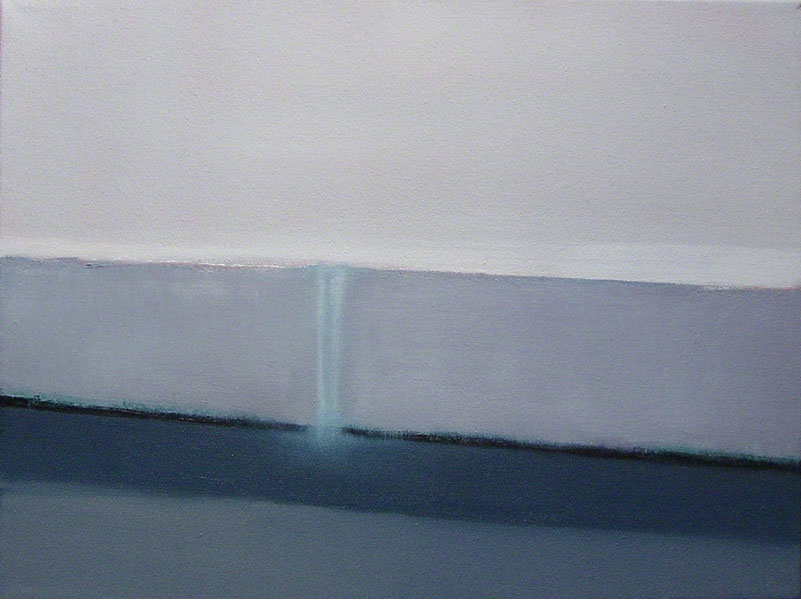 |
| "Far South of Dawn" oil and cold wax on panel 36" x20" |
 |
| "Her Hand Me Down Idea" oil and cold wax on panel 24" x24" |
 |
| "Sitting In The North" oil and cold wax on panel 16" x 16" |
 |
| "White moth in the Closet" oil and wax on panel 24" x 24" |
 |
| "She Saw The Claustrophobia" oil and beeswax on panel 12" x 12" |
I don't post abstract work all that often. Not because I don't think it's worthwhile but mostly because I myself don't work that way and feel I have less to say about it. But sometimes some work just grabs your attention, and for the very reason that you're not sure why, it demands an attempt to explain it. In these oil and wax paintings Jeane Myers is pursuing a form of abstract expressionism, building up layers of thick encaustic textures, spreading pigment is gestural swathes and scraping and scrawling through it to allow previous layers to emerge. Her relatively monochromatic palette lends the work an earthy, almost archaeological feel, as if these were segments of some ancient stone walls that had been alternately plastered, painted, cracked, scratched, gouged, graffitied, and worn by the elements over countless centuries. Some look like the interior of a cave where you can see indications of geological layers covered over with deposits of lime and guano and subsequently clawed by some errant bear. Perhaps it is this intimation of time that appeals to me. They are truly abstract and make no direct reference to the observable world, but all visual art, even the most purely abstract is still a response to that world. I cannot help but think the artist must build these images with the compression of time in mind, trying to recreate through the creative process, the layers of chance events that accumulate over vast expanses of time in the textures that surround us, mostly unnoticed and unappreciated.
Not all of her work is pure abstraction. "Figures -", she says, "they come all of a sudden and stop just as suddenly". They have made an appearance in her most recent pieces. Who knows how long they will linger. Will they recede into the surface of the work, dissolving back into abstraction gradually or will they simply vanish all at once? Or will they linger and evolve into a new kind of work for the artist? To find out you can follow the artist's blog:
www.jeane-artit.blogspot.com
To see many more paintings go to her website
www.jeanemyers.com
or better yet check out her
Flickr page.
you can see her work in person in Port Townsend WA at
Simon Mace Gallery
and also on Bainbridge Island, WA at
Bainbridge Arts and Crafts.





























